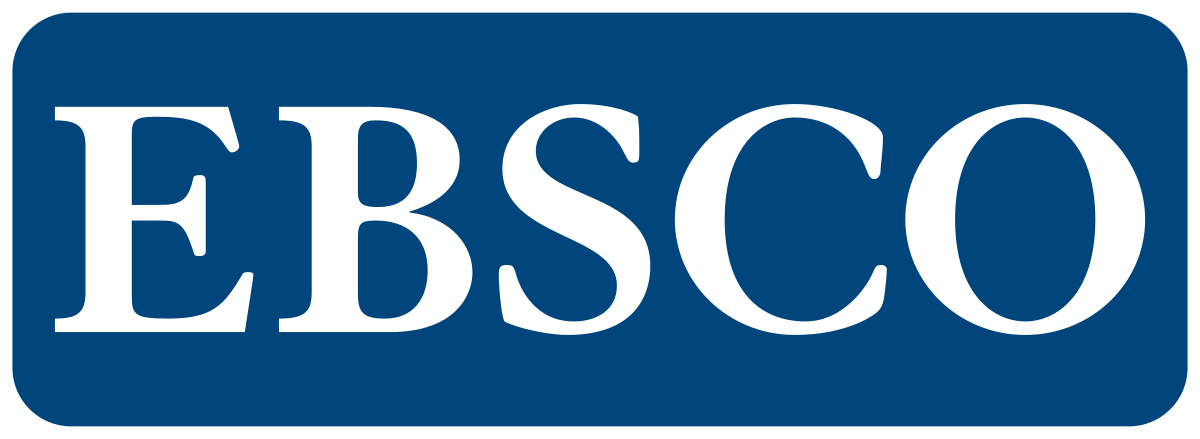Accumulation of Heavy Metal Copper (Cu) in Mangrove Vegetation in River Flow of the Sea Coast
DOI:
https://doi.org/10.23960/jtep-l.v14i2.352-361 Abstract View: 159
Abstract View: 159
Abstract
Mangroves have ecological functions, one of which is being able to absorb and accumulate heavy metals which can pollute the environment. The aim of the research is to assess the ability of mangroves to accumulate the heavy metal Cu. The research location is on the East Surabaya River Coast. The research method is purposive sampling with a distance of 250 m from one point to another. The pH value is classified as neutral to slightly alkaline. The salinity value is classified as very high. The texture of mangrove sediments has fine particles consisting of clay and dust. Cu concentrations in sediments are still below quality standards according to the United States Environmental Protection Agency (US-EPA). The Cu concentration in the sediment was highest in the Tambak Oso River with an average of 50.50 mg/kg. The concentration of heavy metals in the roots is higher than in the leaves. The bioconcentration factor (BCF) value is classified as the excluder, while the translocation factor value is classified as the phytostabilization and phytoextraction classes.
Keywords: Estuaries, Mangroves, Pollution, East surabaya, Cu toxicity.
Downloads
References
Akhrianti, I., Franto., Nurtjahya, E., & Syari, I.A. (2018). Condition of the North Coast Mangrove community of Mendanau Island and Batu Dinding Island, Belitung Regency. Akuatik: Jurnal Sumberdaya Perairan, 12(1), 13-23. https://doi.org/10.33019/akuatik.v12i1.856
Aini, H.R., Suryanto, A., & Hendrato, B. (2016). Hubungan tekstur sedimen dengan mangrove di Desa Mojo Kecamatan Ulujami Kabupaten Pemalang. Management of Aquatic Resources Journal (MAQUARES), 5 (4), 209–215. https://doi.org/10.14710/marj.v5i4.14409
Azzahra, A.D. (2015). Analysis Of current pattern and sedimentation on Kali Buntung River Estuary, Tambak Oso, Surabaya. [Final Project], Faculty of Marine Technology, Sepuluh Nopember Institute of Technology. https://repository.its.ac.id/75632/1/4311100059-Undergraduate_Thesis.pdf
Baker, A.J.M. (1981). Accumulator and exclusion strategies in the response of plants to heavy metals. Journal of Plant Nutrition, 3, 643-654.
Basyuni, M., Wasilah, M., Hasibuan, P.A.Z., Sulistiyono, N., Sumardi., Bimantara, Y., Hayati, R., Sagami, H., & Oku, H. (2019). Salinity and subsequent freshwater influences on the growth, biomass, and polyisoprenoids distribution of rhizophora apiculata seedlings. Biodiversitas, 20(1), 388–395. https://doi.org/10.13057/biodiv/d200146
Burges, A., Alkorta, I., Epelde, L., & Garbisu, C. (2018). From phytoremediation of soil contaminants to phytomanagement of ecosystem services in metal contaminated sites. International Journal of Phytoremediation, 20(4), 384–397. https://doi.org/10.1080/15226514.2017.1365340
Dewi, P.K., Hastuti, E.D., & Budihastuti, R. (2018). Kemampuan akumulasi logam berat tembaga (cu) pada akar mangrove jenis avicennia marina (forsk.) dan rhizophora mucronata (lamk.) di Lahan Tambak. Jurnal Akademika Biologi, 7(4), 14–19. https://ejournal3.undip.ac.id/index.php/biologi/article/viewFile/22296/20465
Doyle, J., Solberg, T., Tiefenthaler, J., Chair, V., O’brien, G., Behnke, H.F., Poulson, H.D., Ela, J.P., Willett, S.D., Hassett, S., & Smith, W.H. (2003). Wisconsin Departement of Natural Resources.
Hamzah, A., & Priyadarshini, R. (2019). Remediasi Tanah Tercemar logam Berat. UNITRI Press. http://repository.unitri.ac.id/1584/1/Buku%20Remediasi%20Logam%20Berat.pdf
Hamzah, F. (2010). Accumulation of heavy metals pb, cu, and zn in Muara Angke Mangrove Forest, North Jakarta. Elektronik Jurnal Ilmu dan Teknologi Kelautan, 2(2). https://doi.org/10.29244/jitkt.v2i2.7851
Handayani, C.O., Dewi, T., & Hidayah, A. (2018). Biokonsentrasi dan translokasi logam berat cd pada tanaman bawang merah dengan aplikasi amelioran, Jurnal Tanah dan Sumberdaya Lahan, 5(2), 841–845.
Harnani, B.R.D., & Titah, H.S. (2017). Kemampuan avicennia alba untuk menurunkan konsentrasi tembaga (cu) di Muara Sungai Wonorejo, Surabaya. Jurnal Teknik ITS, 6(2). http://dx.doi.org/10.12962/j23373539.v6i2.23855
Hermanto, S., & Nawiyanto, N. (2012). Menyelamatkan Kali Mas Surabaya (Studi tentang pencemaran dan penanggulangannya, tahun 1976-2009). Artikel Ilmiah Mahasiswa 2012. Program Studi Ilmu Sejarah, Fakultas Sastra, Universitas Jember.
Mahasri, G., Eshmat, M.E., & Rahardja, B.S. (2014). analysis of heavy metal content of lead (pb) and cadmium (cd) in green mussels (Perna viridis L.) in Ngemboh Waters, Gresik Regency, East Java. Jurnal Ilmiah Perikanan Dan Kelautan, 6(1), 101–107. https://doi.org/10.20473/jipk.v6i1.11387
Macfarlane, G., Pulkownik, A., & Burchettb. (2003). Accumulation and distribution of heavy metals in gray mangrove, Avicennia marina (Forsk.) Vierh.: potential biological indications. Environmental Pollution, 139–151.
Nursagita, Y.S., & Harmin. (2021). Phytoremediation study to reduce heavy metal concentrations in coastal areas using mangrove plants (Case study: Mercury pollution in Jakarta Bay). Engineering Journal, 10(1), G22-G28.
Lestari, T.A., & Rahadian, A. (2017). Metode Kuantifikasi Pendugaan Cadangan Karbon Ekosistem Mangrove. Indonesia National Coordinating Body.
Othman, R., Ramya, R., Baharuddin, Z.M., Hashim, K.S.H-Y., & Yaman, M. (2015). Ecological indicator agents for inorganic contaminants state monitoring through sonneatia alba, acicennia alba, and rhizophora apiculata. Green Initiatives and Sustainable Engineering, 77(30), 2180–3722. https://doi.org/10.11113/jt.v77.6874
Purwiyanto, A.I.S. (2013). Daya serap akar dan daun mangrove terhadap logam tembaga (cu) di Tanjung Api-Api, Sumatera Selatan. Maspari Journal, 5(1), 1–5. http://masparijournal.blogspot.com
Rachmawati., Yona, D., & Kasitowati, R. (2018). Potential of avicennia alba as an agent of phytoremediation heavy metal (pb and cu) in Wonorejo, Surabaya. Journal of Marine Science and Technology, 7(3), 227-236. https://doi.org/10.21107/jk.v11i1.3341
Rahim, S., & Wahyuni, D. (2017). Mangrove Forests and Their Use (Marini Susanti, Ed.; 1st ed.). Deepublish.
Sabir, M., Waraich, E.A., Hakeem, K.R., Öztürk, M., Ahmad, H.R., & Shahid, M. (2014). Phytoremediation: mechanisms and adaptations. mechanisms and adaptations. Soil Remediation and Plants: Prospects and Challenges, 85–105. https://doi.org/10.1016/B978-0-12-799937-1.00004-8
Sahara, E. (2009). Distribusi pb dan cu pada berbagai ukuran partikel sedimen di pelabuhan Benoa. Jurnal Kimia, 3(2), 75-80.
Santi., Tiwow, V.M.A., & Gonggo, S.T. (2017). Analysis of copper (cu) and lead (pb) in Seawater and Sediment in Loli Coastal Waters subdistrict Banawa District Donggala. Jurnal Akademika Kimia, 6(4), 241-246.
Setiawan, A. (2008). Processing of Liquid Waste Containing Iron, Copper and Nickel Metals Using the Flotation-Filtration Method with Lampung Natural Zeolite as a Binding Material. [Master Theses]. Department of Chemical Engineering, Faculty of Engineering, University of Indonesia, Jakarta.
Setiawan, H. (2015). Akumulasi dan distribusi logam berat pada vegetasi Mangrove di Pesisir Sulawesi Selatan. Jurnal Ilmu Kelautan, 7(1), 12–24. https://doi.org/10.22146/jik.6134
Setyawan, A.D., A. Susilowati and Wiryanto. (2002). Relic habitat of mangrove vegetation on the south coast of Java. Biodiversity 3(2), 242-256.
Susilawati, D., Widowati, H., Sulistiani, W. S., & Metro, U. M. (2021). Pengaruh variasi perendaman udang vaname (Litopenaeus vannamei) dalam asam buah alami terhadap penurunan kadar timbal (Pb) di tambak tradisional Pasir Sakti Lampung Timur.
Biolava, 2(2), 134-143. https://doi.org/10.24127/biolova.v2i2.1011
T, K.I.Y., Sahara, E., & Dewi, I.G.A.K.S.P. (2013). Specifications and bioavailability of copper metal (Cu) in various sizes of sediment particles in the Sanur Beach Area. Journal of Chemistry, 7(2), 141–152.
Utami, R., Wini R., & Sapanli, K. (2018). Pemanfaatan mangrove untuk mengurangi logam berat di perairan. Seminar Nasional Hari Air Sedunia, 1(1), 141-153.
Downloads
Published
How to Cite
Issue
Section
License
Authors who publish with this journal agree to the following terms:
Authors retain copyright and grant the journal right of first publication with the work simultaneously licensed under a Creative Commons Attribution-ShareAlike 4.0 International Lice that allows others to share the work with an acknowledgement of the work's authorship and initial publication in this journal.
Authors are able to enter into separate, additional contractual arrangements for the non-exclusive distribution of the journal's published version of the work (e.g., post it to an institutional repository or publish it in a book), with an acknowledgement of its initial publication in this journal.
Authors are permitted and encouraged to post their work online (e.g., in institutional repositories or on their website) prior to and during the submission process, as it can lead to productive exchanges, as well as earlier and greater citation of published work (See The Effect of Open Access).
Jurnal Teknik Pertanian Lampung

JTEPL is licensed under a Creative Commons Attribution-ShareAlike 4.0 International License.













